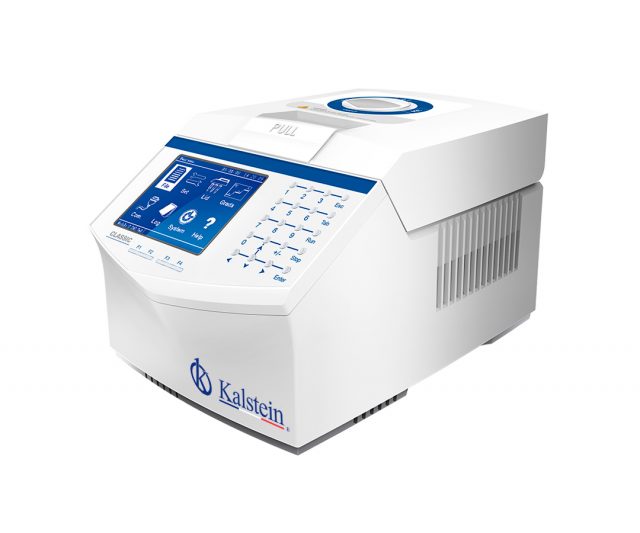A real-time thermocycler is a molecular biology equipment widely used in the laboratories of this specialty. These devices carry out the polymerase chain reaction in real time (qPCR), that is to say they allow carrying out the PCR and at the same time they can absolutely quantify the product of the amplification.
Real-time PCR is a technique for determining DNA or RNA amounts in a wide variety of assays involving gene expression, pathogen and transgenic detection, genotyping, viral load determination, among others. This technique has important features such as high specificity, wide range of detection and speed in product display.
How does a real-time thermocycler work?
A real-time thermocycler has the ability to influence each sample with a specific beam of light (at a given wavelength) and to detect fluorescence emitted by an excited fluorochrome. This equipment can quickly heat and cool the samples, allowing the steps of the polymerase chain reaction to be carried out, this process consists of a series of temperature changes that are repeated 25-40 times.
In other words, this equipment automatically and cyclically performs temperature changes required for the amplification of a deoxyribonucleic acid (DNA) chain; from a thermostable enzyme, and the use of fluorophore-labeled substances that allow measurement of the generation rate of one or more specific products.
This is why a thermocycler allows to detect and quantify simultaneously specific nucleic acid sequences by means of fluorescent molecules present in the reaction, being the increase of fluorescence directly proportional to the increase of the amount of amplified DNA molecules in the reaction.
How is a real-time thermocycler designed?
Real-time thermocyclers are designed to deliver stable temperature, exceptional optical performance, accuracy and accuracy. These devices are widely used in various fields of science such as scientific research, clinical detection and diagnosis, forensic applications and quality assurance tests.
These devices have a powerful coupled optical system, which monitors signals from fluorophores used to detect the amplified product to monitor the progress of the amplification reaction, as well as hardware and software for data capture and analysis, respectively. The fluorometric system of the real-time thermocycler consists of an energy source for exciting fluorophores (at a given excitation wavelength) and a detection system, which allows monitoring of the emitted signal (at an emission wavelength).
In the reaction process the fluorescence increases as the product is amplified, the amplification and detection processes are combined in a single stage. Currently there are different types of real-time thermocyclers, whose main differences are the energy source, which they use for excitation. There are usually three types of sources: lamps, light-emitting diodes (LEDs) and lasers.
What do we offer you in Kalstein?
At Kalstein we are manufacturers of laboratory equipment, innovative and of the highest quality, so we put at your disposal the system of PCR in real time YR01869-1 / 2, a high performance desktop that offers you reliability, sensitivity and high precision when making your PCR, this novel device has the following characteristics:
- Innovative optical design.
- Two- and five-channel fluorescent detection system with LED light source and high resolution CCD.
- The optical system automatically collects data from all wells during data acquisition at the same time.
- YR01869-1/2 can discriminate up to five targets in a single reaction well.
- Optical filter sets are designed to maximize fluorescence detection for specific dyes on specific channels.
- Open system compatible with different reagents and consumables.
For more information we invite you to take a look at HERE

